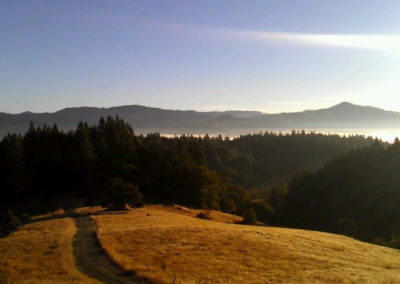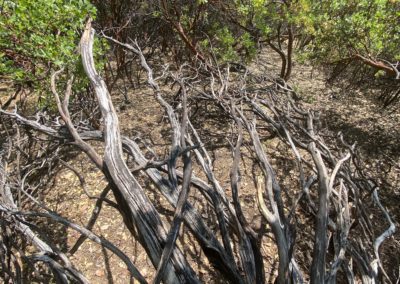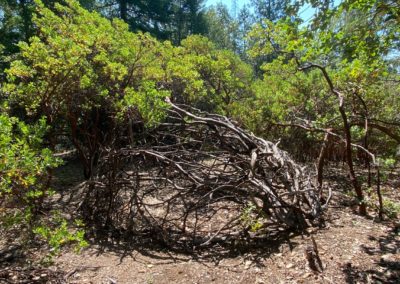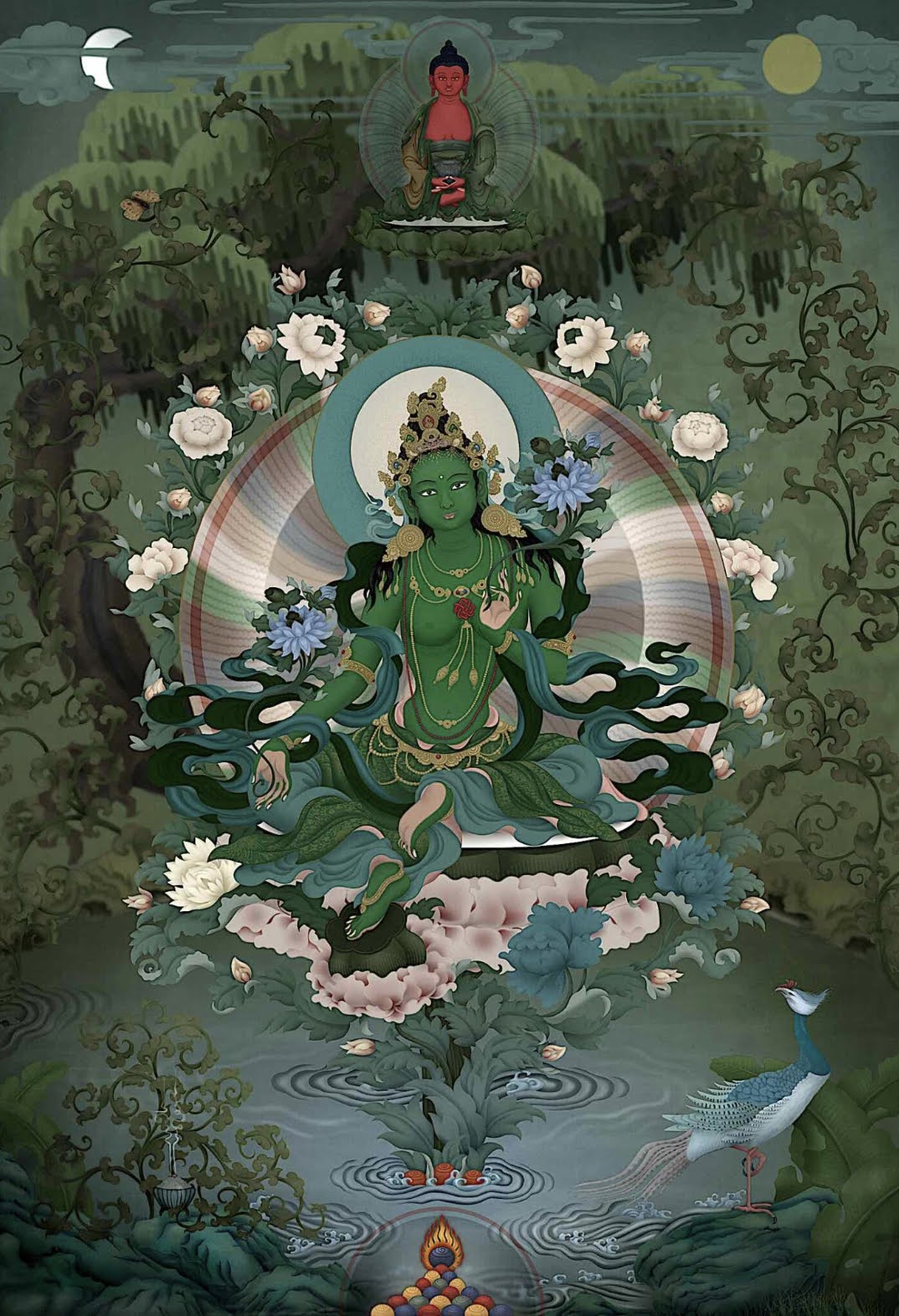Gankyil of the Madrone Forest
Joyful Land of the Five Golden Dharmas
Mendocino, CA
Autumn 2019, Summer 2022
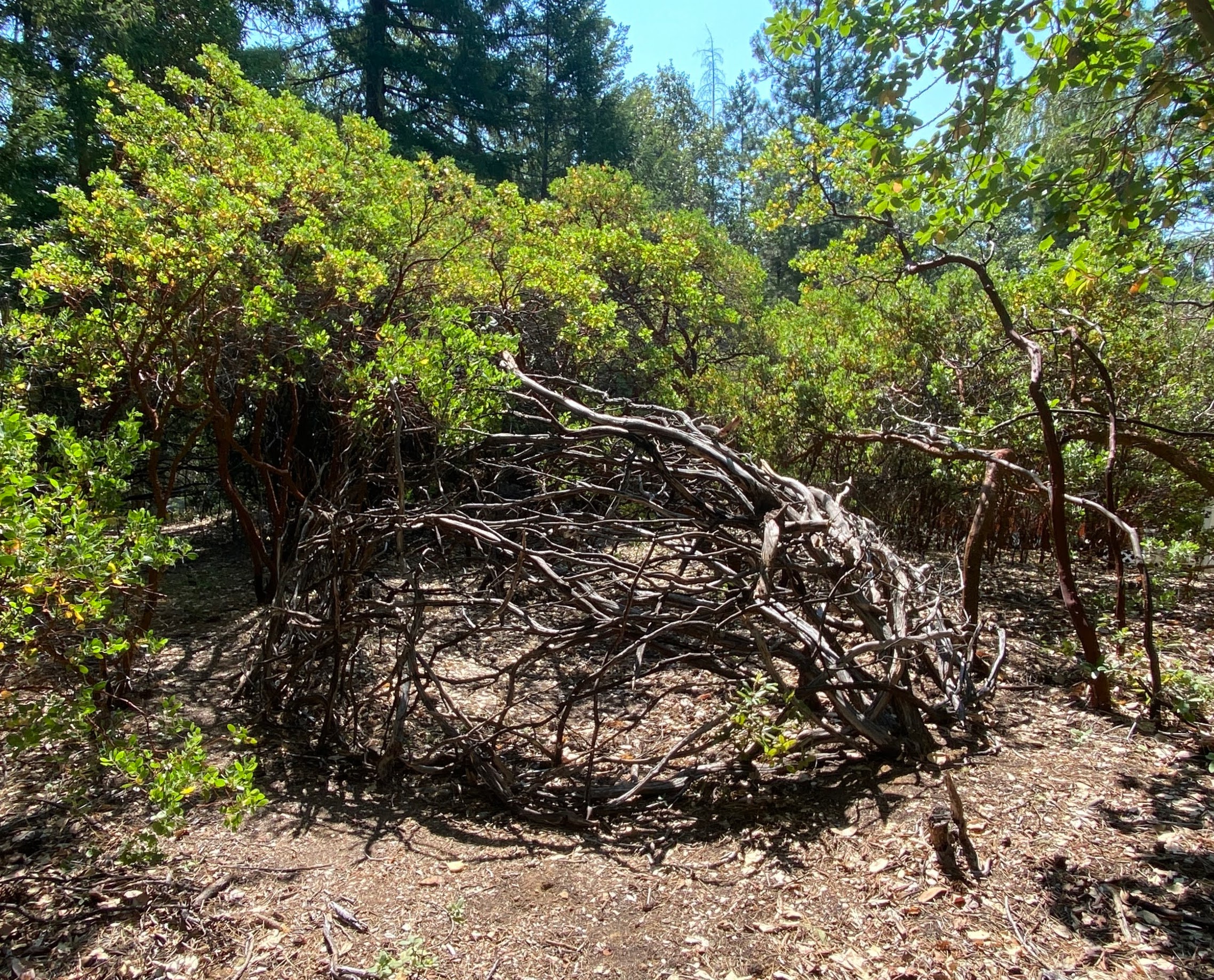
Summary: Gankyil of the Madrone Forest, constructed and reconstructed during two summer spans on The Joyful Land of the Five Golden Dharmas, a remote retreatland north of Willits and west of the Eel River and Mendocino National Forest in Mendocino County. Built with dead limbs from madrone and manzanitas with a few from other trees and shrubs. The Gankyil is the “Wheel of Joy.”
The Madrone Forest: I entered a six month solo retreat in late September 2020 on the Joyful Land in Mendocino, California. I lived in a hut within a 5 acre enclosed forest compound. Due to the Covid Lockdowns, I continued living on this land for two years, excepting a two month visit to New York. Though I knew this land from many previous visits and shorter retreats, the flow of seasons within unfolding meditations as well as caretaking labor was a source of deepening joy, discovery and wonder. To live with madrones, manzanitas, mature doug firs and black oaks on a day in and day out basis over many seasons was an extraordinary gift. I consider Madrones to be the “dancers of the forest” as their limbs may twist and extend for meters in one direction or another suddenly torquing verticle into the light. They shed their bark in summer revealing an extraordinary smooth and cool sheen. Their fruit is edible– as is the bark– and has long been a source for medicine and food to people and many animals as well as giving off a glorious fragrance. Manzanitas feel like their punk kid sister, shrubs growing more verticle, near the ground and being drought resistance. Spent limbs dry and eventually fall to the ground or remain like totems attached to main living stalk. There is a disease that hastens this and I am not sure how much this disease was affecting the trees in this forest– which seems quite healthy– and how much was purely the natural process.
The Practice: A foundational element of the practices I engaged with is reciprocity and offering. In traditional Vajrayana Buddhist retreats, there are many offering practices involving water, smoke, fire, food, feasts, making stupas large and smale and so forth that have many levels of symbolic and energetic purpose. Alongside traditional forms, there are “freestyle” forms of practice where anything you do can become an offering. The traditional methods and the rigors of the ritual framework have, for me, powerfully informed, fleshed out and expanded the intentionality of the freestyle creative approach.
The Gankyil: In the future, I will write more about the specific practice. In brief, a mandala is made and the mantra associated with this mandala is written in a special powder within it. This symbolic form relates to a specific method of relating to one’s own environment and the contents and basis of one’s perceptual powers. The Gankyil symbolizes the wisdom joy that opens as this process unfolds and clarifies. This symbol form is present in many variations in cultures from Ireland to China extending back to our earliest recorded history.
The Gankyil of the Madrone Forest, Part 1: The red skin and movements of the madrones and manzanitas had the quality of mantric syllables and the solar feminine power of this mantra. During breaks in formal practice sessions, I circled the very edges of the fence line, clearing the longest rugged walking path I could. Early on during the retreat (autumn 2019), in a clearing in the southwest corner of the compound, without any clear plan, I started building a shape out of fallen limbs and dead limbs I cracked off from the living trunks. Gradually, this formed into a spirallic sphere, a domed nest miniature mandala steeped in a feeling of impermanence, beauty and mystery– a freestyle offering made while practicing within it in full blaze of the sun.
The Gankyil, Part 2: I returned to the land for a three week retreat in July of 2022. By this point, the Gankyil had fallen in on itself after a couple winters and rainy seasons. I set about restoring and constructing a much fuller, defined structure, working in the shady forest during those hot July days. In the Mahayana Buddhist tradition– and many traditions throughout the world– Green Tara, in one form or another, is associated with the health, abundance, generosity and medicine of the forest. The last image is of Cittamani Tara, associated with a very beautiful practice perfect for this land.
Many thanks to those who welcomed me to this land, who made these retreats possible and for the many teachers, retreatants, benefactors, protectors and animals and insects who love and feed the life force of this place.


